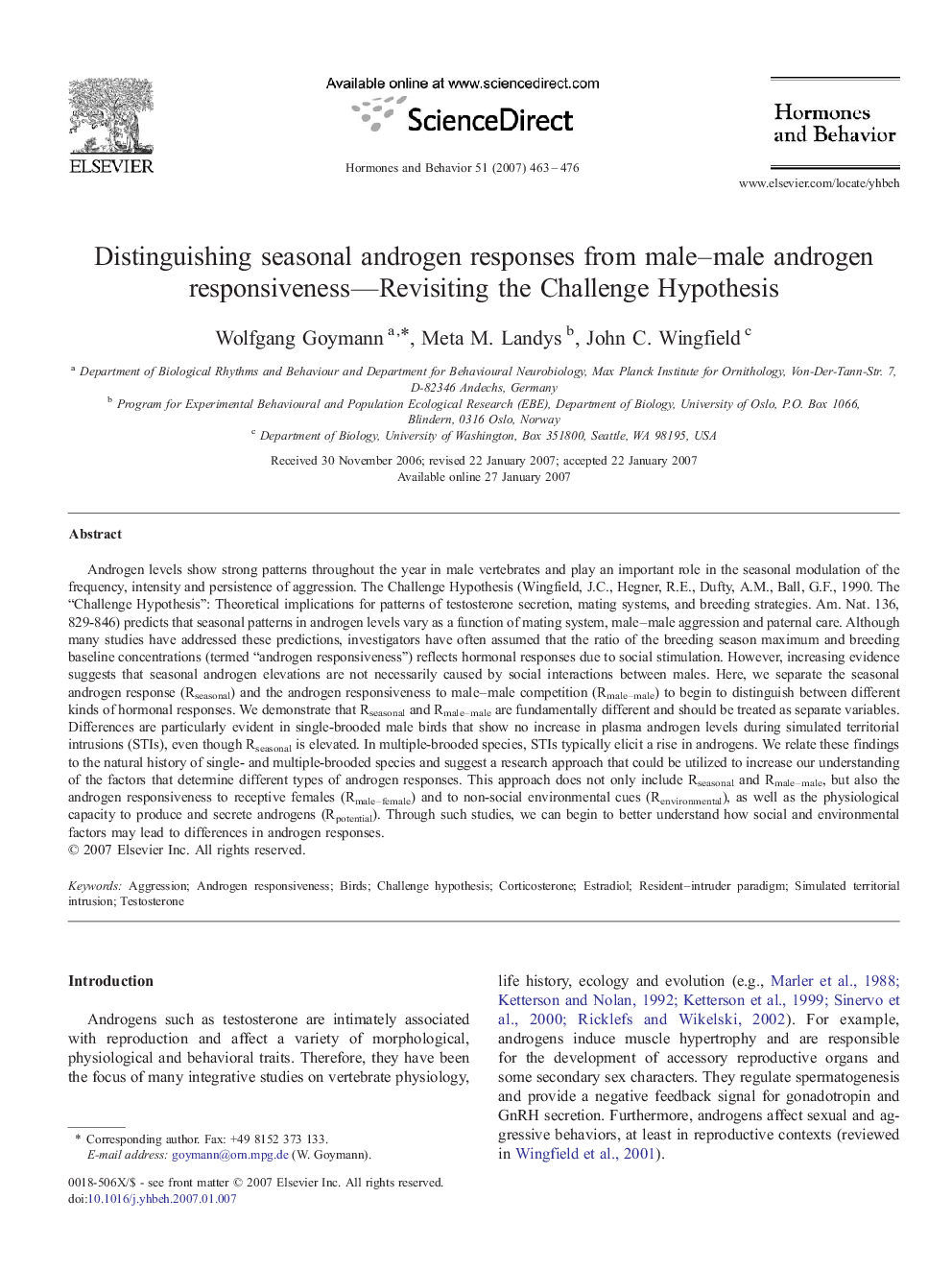| کد مقاله | کد نشریه | سال انتشار | مقاله انگلیسی | نسخه تمام متن |
|---|---|---|---|---|
| 323814 | 540796 | 2007 | 14 صفحه PDF | دانلود رایگان |

Androgen levels show strong patterns throughout the year in male vertebrates and play an important role in the seasonal modulation of the frequency, intensity and persistence of aggression. The Challenge Hypothesis (Wingfield, J.C., Hegner, R.E., Dufty, A.M., Ball, G.F., 1990. The “Challenge Hypothesis”: Theoretical implications for patterns of testosterone secretion, mating systems, and breeding strategies. Am. Nat. 136, 829-846) predicts that seasonal patterns in androgen levels vary as a function of mating system, male–male aggression and paternal care. Although many studies have addressed these predictions, investigators have often assumed that the ratio of the breeding season maximum and breeding baseline concentrations (termed “androgen responsiveness”) reflects hormonal responses due to social stimulation. However, increasing evidence suggests that seasonal androgen elevations are not necessarily caused by social interactions between males. Here, we separate the seasonal androgen response (Rseasonal) and the androgen responsiveness to male–male competition (Rmale–male) to begin to distinguish between different kinds of hormonal responses. We demonstrate that Rseasonal and Rmale–male are fundamentally different and should be treated as separate variables. Differences are particularly evident in single-brooded male birds that show no increase in plasma androgen levels during simulated territorial intrusions (STIs), even though Rseasonal is elevated. In multiple-brooded species, STIs typically elicit a rise in androgens. We relate these findings to the natural history of single- and multiple-brooded species and suggest a research approach that could be utilized to increase our understanding of the factors that determine different types of androgen responses. This approach does not only include Rseasonal and Rmale–male, but also the androgen responsiveness to receptive females (Rmale–female) and to non-social environmental cues (Renvironmental), as well as the physiological capacity to produce and secrete androgens (Rpotential). Through such studies, we can begin to better understand how social and environmental factors may lead to differences in androgen responses.
Journal: Hormones and Behavior - Volume 51, Issue 4, April 2007, Pages 463–476